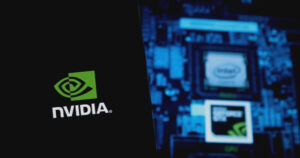Unlocking the Power of NVIDIA’s Multi-Process Service for Molecular Dynamics Simulations
By: Alvin Lang
Published on: June 4, 2025
As the realms of computational science and cryptocurrency continue to intersect, understanding how leading-edge technologies enhance simulations becomes increasingly important. Among these innovations, NVIDIA’s Multi-Process Service (MPS) stands at the forefront, revolutionizing how molecular dynamics (MD) simulations are conducted. Here at Extreme Investor Network, we seek to bring you insights that matter, especially when it comes to technologies that drive investment opportunities in the digital age.
What is NVIDIA’s Multi-Process Service?
Molecular dynamics simulations are crucial for modeling atomic interactions over time, yet they often require extensive computational power. Unfortunately, many simulations operate with smaller system sizes, leading to underutilization of modern graphics processing units (GPUs). Enter NVIDIA’s MPS, a cutting-edge solution that optimizes GPU resources by allowing multiple simulations to run concurrently on a single GPU. This game-changing technology maximizes GPU utilization and significantly improves throughput, making it easier for researchers and investors alike to conduct complex simulations efficiently.
Understanding MPS
MPS is a binary-compatible extension of the CUDA API tailored for efficient GPU sharing across various processes. It minimizes context-switching overhead and enables enhanced utilization by allowing several processes to share scheduling resources. Notably, since the NVIDIA Volta generation, MPS also supports concurrent kernel execution from different processes, which enhances performance when individual processes cannot fully leverage the GPU’s capabilities. One of the most user-friendly aspects of MPS is its ability to be initiated with regular user privileges, simplifying deployment within research environments.
Implementing MPS with OpenMM
To truly harness MPS’s capabilities, let’s focus on one of the most popular molecular dynamics engines: OpenMM. Users can run multiple simulations at once by launching several instances of a simulation script as distinct processes. While it may slow down individual simulations slightly, overall throughput sees a significant uptick, thanks to the advantages of parallel execution. The straightforward command structure allows users to manage GPU targeting and process allocations effectively, leading to optimized resource utilization.
Benchmarking Performance Gains
Benchmarks tell a compelling story when it comes to MPS. For example, systems like DHFR with 23,000 atoms reveal dramatic performance improvements, particularly on high-end models such as the NVIDIA H100 Tensor Core. Larger systems, exemplified by benchmarks like Cellulose with 409,000 atoms, experience throughput increases close to 20%. These improvements not only make simulations faster but also increase the feasibility of conducting extensive research—something every investor in the tech and biotechnology sectors should note.
Elevating Throughput with CUDA_MPS_ACTIVE_THREAD_PERCENTAGE
MPS is already impressive, but why not push its capabilities even further? By default, MPS allows full GPU resource access, but adjusting the CUDA_MPS_ACTIVE_THREAD_PERCENTAGE environment variable can optimize throughput further by limiting thread availability per process. This simple tweak can substantially enhance collective throughput, especially in simulations involving multiple concurrent processes.
Applications in Free Energy Calculations
Beyond just improving raw throughput, MPS excels in specific applications like free energy perturbation (FEP) simulations, which depend on replica-exchange molecular dynamics. By running several simulations at various λ windows together, MPS alleviates GPU underutilization, leading to a remarkable 36% boost in throughput when employing three MPS processes on advanced GPUs like the NVIDIA L40S or H100.
Conclusion: The Future of Simulations and Investments
NVIDIA’s MPS is not just a technological marvel; it’s a crucial tool for enhancing the performance of molecular dynamics simulations with minimal coding effort. By optimizing how GPU resources are utilized, MPS significantly ramps up efficiency across a multitude of simulation scenarios. For those keen on exploring these groundbreaking capabilities, NVIDIA offers an array of additional resources and tutorials to facilitate your journey.
As we continue to delve deeper into the intersection of technology and investment, keeping up with developments like NVIDIA’s MPS is essential for making informed decisions in the burgeoning world of cryptocurrencies and beyond. At Extreme Investor Network, we’re committed to providing you with insights that set you apart in a rapidly evolving landscape.
Stay informed and competitive. Explore more about cutting-edge tech and investment strategies by following us at Extreme Investor Network.

